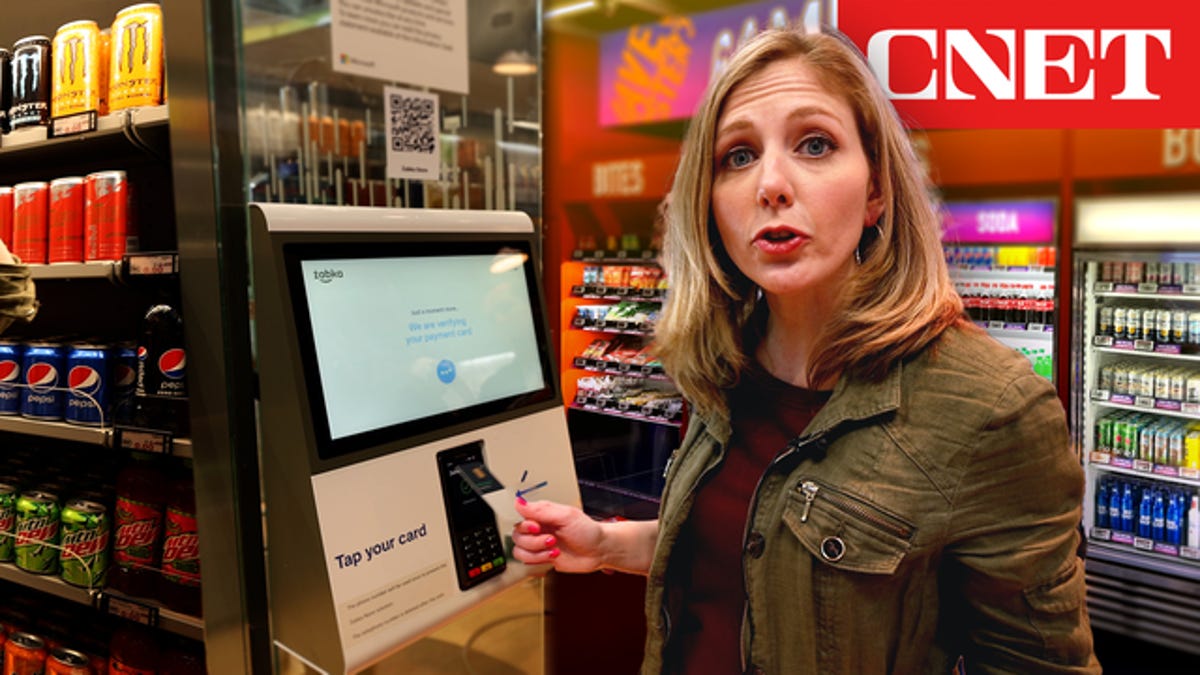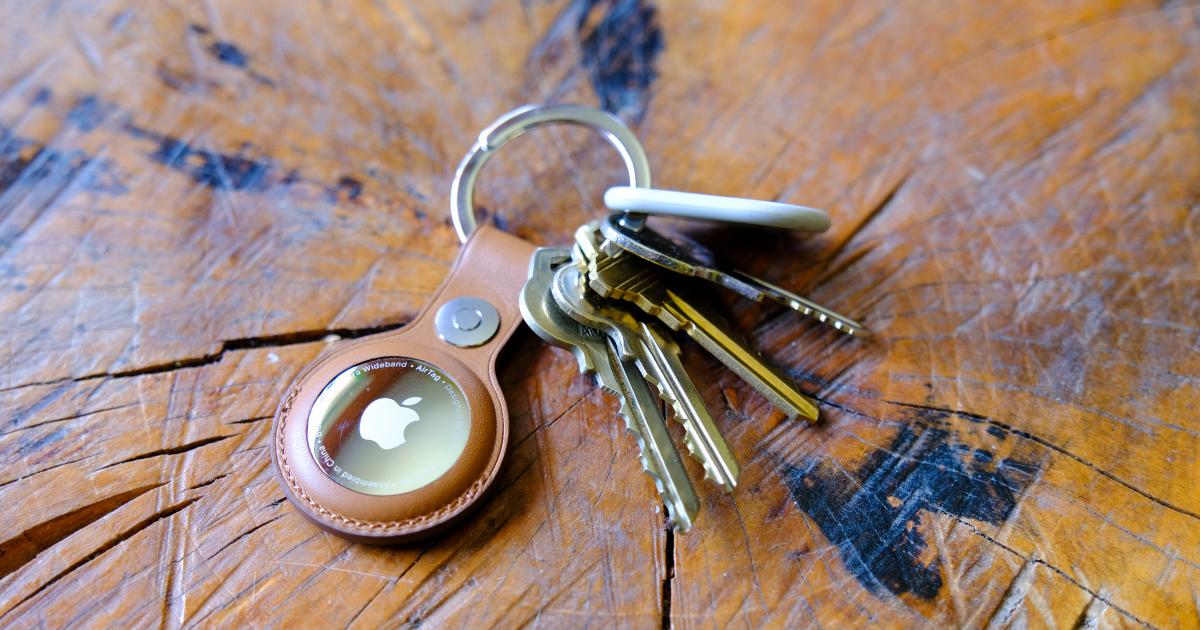
Speaker 1: You could just kind of throw your stuff on as you’re shopping. I don’t know, whatever retailers are turning to technology to find solutions to the labor shortage. I’m at the big National Retail Federation conference that’s held in New York City to see how robots and AI are filling in the gaps for humans and to see how this is shaping the future shopping experience.
Speaker 1: [00:00:30] Over the years, we are seeing more robots helping humans at factories, doing things like sorting products or pulling boxes from various aisles. But in covering this year’s NRF show, there is way more talk about using computer intelligence for things like image recognition to be a replacement for human eyeballs. Companies like to talk about finding tools to help in today’s labor shortage and sometimes not having enough workers [00:01:00] is because companies are not paying a high enough salary to attract those workers regardless. The show floor had many examples of expensive systems to keep an eye on, store inventory and the checkout process. I’m gonna show you how image recognition is changing. The very annoying self-checkout process here at Edge Offi, there’s a camera always looking down at what you are scanning, and it can tell exactly what you’re putting down. Doesn’t matter how I put those bananas down, it knows they’re bananas. [00:01:30] The camera’s good enough to be able to scan that for anyone trying to be sneaky and get diapers, but actually just pay for gum. It’s scanned gum, but the image knows it is not gum, and I try to pay quickly. It’s not gonna let you pay.
Speaker 1: NCR is taking this to another level here. You could just throw various items all at once down on the surface, at any angle, you have a camera up top, so [00:02:00] you could just kind of throw your stuff on as you’re shopping, I don’t know, whatever. And uhoh, it’s already figuring it out. I don’t have to scan the barcode. This kind of system makes sense at places like stadiums or gas stations where maybe you have an item that doesn’t typically have a barcode, like a plate of nachos. It’ll be able to recognize it and have you move right along. Google is also in the game now using its image recognition smarts. It can tell the difference between many [00:02:30] different versions of a product on a shelf at many different angles. This is the shelf check solution where you could take fixed cameras, cameras that I might already have and be able to scan the shelves, know something’s wrong, something’s amis. Maybe a kid took the marshmallows and I don’t know, just put ’em back where the cream cheese goes. Well, a camera is gonna be able to scan that and know something’s amiss. You know that maybe they’re low on stock. So what makes more sense is having a big automated robot like Brain Os. This has a, a lot of different sensors [00:03:00] can be customized to whatever a company needs, but it also can scan the shelves and mop the floor at the same time.
Speaker 1: So here’s a pain point for me when I’m shopping, when you need something just really quick at the store, but they’ve locked the thing you need behind something because it’s high value, or maybe it’s just stolen a lot. So you have to normally request an associate, ring a little bell, sit there and wait. There’s cameras and they gotta text you a code. Here’s how it works. So if I need these razors, [00:03:30] uh, to unlock the case, I still can call somebody. I can press to request an associate to come by. Or if I have no patience, I could use my cell phone. It tells me about privacy, that my phone number is not gonna be used for anything other than just accessing this merchandise. Put the code in, right? It’ll unlock it. You can grab what you need. But if I start grabbing a lot of stuff, really oddly, I might set something off.
Speaker 1: If I left the door open too long, that’s not a warning sign. So [00:04:00] that associate’s coming by. But kind of to de de tear odd behavior. You have a camera right here, and I just gave my phone number. So the company says that they’re starting tests on this kind of technology at cbs, at Walgreens, and a lot of other places. You may start seeing this pop up here and there. All of this is pitched as a way to help when there are fewer humans in the stores. But I also saw more stores that don’t need any humans at all.
Speaker 1: We’re seeing more examples [00:04:30] of stores that are just very small, almost like a vending machine type store where you just walk in and cameras are tracking exactly what you’re buying. Here’s an example of a store that is all over Poland. It’s called Jka. And all you would do to enter is just tap in your card. So before I go in, I have to also give them my phone number. That’s where we’re gonna get the receipt so they can make this store as big or small as they need. But in this example, there are 24 cameras on top tracking whatever I grab and put back, and there are about 500 [00:05:00] different products in here that they can do. But they could be as big as 5,000 if they need it to be. So let’s see. I’m thirsty. I think I’m gonna get myself a Caprice sun.
Speaker 1: You know nothing better, right? So it’s gonna be able to track what I buy. And you know, I like get myself a Snickers. Oh, cool ranch. There you go. All right, so if I’m done, I just walk out that fast. We’re seeing check out free examples in different forms. Maybe [00:05:30] you’re a little uncomfortable with having a bunch of cameras overhead. Maybe you don’t wanna enter your phone number in. In this particular case, all you can do is scan your credit card and go in. A lot of people can actually be in this space. At the same time, the computer is knowing who I walked in with. We’re one party, we’re one tab, but there could be like 25 people all just grabbing things. These different types of centers can be customized to what they want. It’s using a combination of the one camera, but also different shelves. These are weighted. So it knows if I picked up a, a Monster Energy drink or the smart hook knows I picked up a [00:06:00] bag of candy, or if I put it back even, and you can retrofit. So in a refrigerator that maybe someone already has one of these types of coolers, they don’t wanna buy a whole new one. All you need to do is insert sensors on the bottom for weight. That way they don’t have to buy a whole new cooler. I walk out and that’s it.
Speaker 2: It’s kind of weird
Speaker 1: When it comes to the labor shortage we’re seeing, I’m wondering, okay, where are the humans? And there are still humans in these examples. You typically, it’s someone at the front kind of introducing the whole concept to someone who’s [00:06:30] new at it. But if they come back for snacks, say like in the middle of a football game, they’re a little more accustomed to it and they can be a little faster. Or someone might be at the exit popping the top of the beer and pouring in a cup for them. So there are still different ways you can use labor, but they’re not just stuck behind a cash register doing one thing only. Okay, so these demo setups look interesting, but I need a real world test. So I went to the convention center lobby where there was a working Amazon [00:07:00] grab and go style store for me to get a quick bite to eat.
Speaker 2: What if I, what if I messed with it? Ah, oh yummy. All right. Is that it? Am I done? I gotta
Speaker 1: Leave this way. Oh, see, you gotta know where
Speaker 2: To go. I’m done. I didn’t have to get my [00:07:30] fingerprints, but I can choose to
Speaker 1: Get a receipt and give him my email.
Speaker 2: Okay.
Speaker 1: You know,
Speaker 1: Buying this was no different than going to a massive vending machine. Even the sandwiches and the salads weren’t that appetizing compared to what you find in a vending machine. It’s just bigger, it’s larger. And the real world application, I didn’t have to give up that much information. I really just had to put my credit card in. That was it. But I think we’re finding in what else is coming about is where we’re comfortable with [00:08:00] in terms of how many cameras are there, how much do you have to give about your own personal information? Do you have to give your phone number to enter? Do you have to give your palm to enter? That’s a territory that is still shaping up, and I don’t think people are really comfortable giving a whole lot of themselves up. Then again, maybe they are okay with a cell phone number if they’ve already given that store their cell phone number.
Speaker 1: So if this tech can really save people time, then we’re talking, then it’s gonna be adopted more. Then [00:08:30] again, when the case was locked, it took a little bit of fumbling to get in. I don’t know if that’s really gonna save enough time to make it worth me to give you my phone number to get in, or for me to feel comfortable that a big camera’s staring at me. And again, we just don’t always think about the cameras that are already watching us. This is a definite interesting area that is evolving. We’ll have to see where it goes. Thanks for watching. I’m Bridget Carey. Still a human doing a human job. I’ll see you next time.






